

Stress - Dealing with Stress
It is common for people who have chronic pain to experience more worry.
This happens for a number of reasons. This chapter will discuss:
• How to recognize the ways that stress and anxiety affect us
physically, especially the way that they affect pain
• How to recognize and deal with common daily hassles
• How to recognize some of your personal stressors and how to deal with those stressors
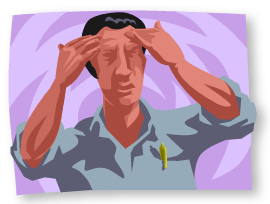
Goals

Learn


Read
Do
About ways to cope with stress and anxiety
New skills on how to handle stressful events
The exercises, listen to the CD, and watch the videos for this chapter

Goal
Be able to live well despite stress and worry
PACE - Picking a Problem
-
Introduction

The information in this section fits most situations but what you are going through may be different. If the doctor or nurse tells you to do something else, please follow what they say.
If you think there may be a medical emergency please go to your nearest hospital Emergency Room.
It is time to do some detective work and clarify one of your concerns that you would like to work on. This is the 1st step of PACE!






Worrying thoughts go through my mind and sometimes this escalates to a sudden feeling of panic.
My wife tells me that when I am stressed, she soon feels stressed too
When I am feeling a great deal of pain, I can’t help but worry about it. Then I feel stressed about it!
I feel restless, as if I always have to do something, keep moving. I even feel that way when there is nothing to do!
When I feel stressed, I feel like I can’t do anything right

I often feel frustrated and angry. I would like to have more control over my emotions
-
What you can do to relieve stress
An open, accepting flow of communication in families helps to reduce stress at home. It helps to take some time to discuss emotions and find simple ways to change stressful situations or responses to stress.
Below are some tips that you can follow to help reduce stress
• Tell your family how you feel. If you cannot communicate with family members, try someone else that you can trust. It is very important to talk about your problems
• Try to relax. Listen to calm music. Take a warm bath. Close your eyes and take slow deep breaths. Take some time for yourself. Enjoy a hobby or some favorite activity
• Exercise. Physical activity reduce stress
• Set realistic expectations. Do your best, and remember that nobody is perfect
• Learn to love yourself and respect yourself. Be with people who accept and respect you
• Remember that drugs and alcohol never solve problems
• Ask for help if you are having problems managing your stress
-
Important points about stress and anxiety
Anxiety is the feelings that you get when you are worried or scared about something. Too much worry for too long is not good for you.
1. STRESS IS NORMAL
We know that it is not just in emergencies and big events in our lives that we experience stress. The majority of stress probably comes from pressures or frustrations that we can later look back on as not really too important. But, at the time it may seem overwhelming.
2. STRESS IS PERSONAL
Although we see that life is stressful, it also stresses different people in various ways. We saw that this is because different things matter to us; because we judge situations differently, we can approach situations in very different states of mind.
3. STRESS IS PHYSICAL
For good reasons. Emergency stresses need emergency reactions. The trouble is that chronic stress and everyday stresses can wear us out and build up tension in the body.
4. STRESS IS EMOTIONAL
Getting anxious, getting angry, and going to pieces can all be part of emergency reactions that are damaging to us and others.
-
Living well despite stress
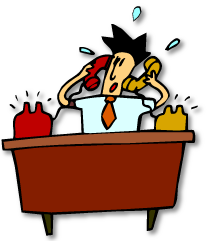
It may be a bit much to talk about ‘making stress your friend’, ‘thriving on stress’ and so on. However, there are some general guidelines to keeping stress within helpful limits. Control can make a lot of difference.
1. KNOWLEDGE
It can be easy to ‘go under’ with stress. To get very caught up in day-to-day pressures. Understanding stress and its effects can help us to step back a little.
2. PLANNING
This is based on pacing. The importance of pacing cannot be emphasized enough. Knowing how to cope with setbacks can also help to stop building up frustration and anxiety.
3. SKILLS
Relaxation is a direct relief from the results of stress. Regular practice also helps to prevent stress by settling the mind. The calm can make it easier to challenge anxious or angry thoughts and break into fixed patterns of reaction.
4. GETTING HELP
We are not alone. It may feel as though we are, or would be better off if we were when we are under stress. Understanding and planning are skills that can be shared with people close to us. They have stressful lives too.
It is normal to experience stress. In fact, it seems that we need some level of stress to be happy. Most of us will get stressed at some time or other. There are lots of things that can make us stressed and it can help to look at our lives to see what things stress us. These stressors are often of two different kinds: daily hassles and personal stressors.
Common daily hassles
• Travel: traffic, road construction, other drivers, late/full public transport
• Weather: excessive heat, cold, rain, snow etc
• Habits: cracking knuckles, chewing fingernails, etc
• City life: crowds, stores, lights, noises, etc
Personal stressors
• Crowds
• Rude comments from people
• Abusive individuals
• Telephone ringing constantly
• Long to-do lists
• Being sick
• Being tired
Notice that many of the things that cause us stress are related to other people. Sometimes there are stressful situations that we don’t have control over. This can make us feel anxious or angry.
It is important to recognize feelings of anger, anxiety, and stress because they have both physical and emotional effects on us, and on the people around us.
Our feelings of stress can become a stressor for other people. These
feelings can be easily passed around.Think of a traffic jam. If you get stressed and angry, start honking the
horn and telling, others may start acting the same way.
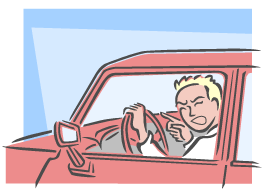
-
Physical reactions to stress
The physical changes that were described in the previous pages
are designed to help us.• Avoid or escape the source of stress
• Fight or attack the source of stress
• Survive
Unfortunately, when stress builds up, we may feel that we are
losing control over the situation.Common Physical Symptoms
Headaches
Weight gain or
weight lossNightmares
Shaking
Sweating
Difficulty swallowing
Changes in appetite
Increased pain
Stuttering
Tightening muscles
Sleep disturbances
Upset
stomach or vague stomach pain

-
Emotional responses to stress
When we are faced with things that stress us, a lot of thoughts may go through our heads. These are ways of trying to get away from the situation.
If, for example, I am trying to finish a job that has to be done but I cannot do it, I will become stressed. Then I may think:
“The job was stupid anyway”
“Why does it have to be done?”
“Why did I agree to do this job?”
These are ways of trying to solve the problem quickly. It may also
become self-blaming:“Why can’t I do this?”
"I am useless”

Common Emotional Symptoms
Stubborn
Inability to control emotions
Often feel
like cryingNew or recurrent fears
Feeling angry
Anxiety
Inability to relax
Withdraw from participating in activities
-
The effects of stress and ways to gain control
Please click here to see a flow chart that outlines the effects of stress and suggests ways to gain control.
-
Myths and facts
There are many common thoughts on stress and anxiety ad it not easy to know which ones are true and which ones are false. You may have heard certain things about stress and anxiety or you could have made your own observations about it. Relying on false information can make things worse. Please click on the icon below to access a list of common thoughts on stress and anxiety. Check to see whether that statement is true or false. You might be surprised about certain answers; it helps to look at the explanation box to see why that common thought turned out to be either true or false.

-
Statistics
For some interesting statistics on stress and anxiety, please look at the following findings gathered by Statistics Canada and Health Canada, you might be surprised!
Did you know?
12.6% Of Canadians suffer with an anxiety disorder
Generalized Anxiety Disorder affects twice as many women as men
Depression, addiction and anxiety afflict almost as many people as heart disease or diabetes
Those with sustained stress are 2-3 times more likely to have conflicts, mental health problems, infections, injuries and substance abuse
Most people who suffer with anxiety do not seek help
Individuals under continuous stress are 5 times more likely to suffer from certain types of cancer
In Canada, the cost of work time lost because of stress is $12 billion
People under constant stress are 3 times more likely to suffer from heart problems and back problems
-
Example

Mike picks a problem to work on
When I’m in pain, I can’t help but get stressed. I worry that my condition
will get worse. This stressful feeling leads to frustration and anger. I would
like to have more control over my emotions
-
Worksheet
PACE - Acting Upon the Problem
-
Introduction
Now that you have clarified what concerns you most, it’s time to decide what to do. Ready… set… action! In this section, the 2nd section of PACE, we will look at various ways to cope with stress and anxiety.
Here’s a start:
• Get in quickly - deal with your stress early on before you become more
wound up.• Plan ahead when possible.
• Predict those situations when you are likely to become stressed. Take action
ahead of time to calm yourself down. Save yourself from ‘blowing your top’
or letting stress ‘eat away at you.’• Try to breathe more calmly and deeply as this will help you to loosen tense
muscles• Challenge the negative thoughts you are having so that they do not begin to
take over.

-
Healthy ways to cope with stress
Relax regularly
Practice makes perfect... or at least better!! Dim lighting, soft music,
quiet surroundings, comfortable clothes, and supported posture, for
example lying down, help us learn to relax. If we practice relaxing often,
when we face stressful situations, we can relax more easily and manage
those times better.
Proper nutritionGood nourishment is needed for both physical and mental energy as
well as emotional stability. Nutritionists suggest that most people should
eat three regular meals daily with two healthful snacks (like a muffin or
a fruit) between them. Avoid sweets and other "junk" foods.Rest
Generally, six (6) to eight (8) hours of sleep nightly is adequate for an adult. Try to go to bed at the same time every night, keep the same wake-up time every morning, and avoid watching TV, studying, or reading in/on the bed.
Exercise
Healthful exercise can reduce the negative effects of stress on your body. Most adults can benefit from 20-30 minutes of moderate exercise three times weekly... or from a brisk, one hour walk three times weekly. Avoid exercising within three hours of your bedtime because your body and mind might be too "revved up" for sleep. Consult with your physician and an exercise professional to plan a routine that is right for your needs.
Take breaks
Typically, a ten minute study break about once every 60 minutes (or a 5
minute break once every 30 minutes) can help you maintain your
concentration and thereby improve your productivity, learning, and later
recall. During your break, move away from work. Distract yourself.
Stretch. Get a drink of water. Eat a light, healthful snack. Make or return
a quick phone call (a call that you can make and end within your break).Seek balance
We grow bored and burned out if we do the same stuff all the time, so add some hobbies or recreational activities to your life.
Manage time
Everything has its time and place. Manage your time and tasks to get done what you can. Make a realistic list of tasks to do. Prioritize the list--eg., must-do-today, must-do-soon, would-be-helpful-to-do, and want-to-do. Break large tasks down into components. Keep an appointment book with times for your regular obligations and commitments crossed out (so you don't use them for other stuff). Pencil items from your to-do list into your appointment book at times when you can reasonably accomplish.
Laugh
Humor can be a wonderful stress reducer. Spend time with friends
laughing about the silly things in life or the comedies that occur every day.
Rent a comedy or recording of a favorite comedian in concert. Call a
friend who makes you laugh.Daydream
Take time to dream and fantasize about places you would like to go for vacations or get-aways. OR reminisce about someplace where you went for a previous vacation. If you tend to get lost in your daydreams (and that interferes with getting done what you need to get done), try setting a time limit. A timer with a bell or buzzer might help you set limits.
Check your thinking
Sometimes our dreads and worries get carried away, and we turn
simple (or not so simple) annoyances into huge catastrophes. Other
times, we make events or experiences more important than they really
are. Ask yourself or a trusted friend if your dreads, worries, fears,
frustrations, etc. are reasonable or perhaps excessive. Remind
yourself that you cannot solve all problems at once but rather can take
them only one at a time.Keep perspective
Remember that time helps us work things out.
Stay focused
Allowing yourself to think about all of the different obligations, needs, and
wants which you have at any given moment can be overwhelming.
Instead of getting lost in distractions, stay focused on doing one thing at
a time. When you find your thoughts wandering, order yourself to stop;
then, return to the one thing that you have chosen as your focus for this
moment.Get support
If your usual methods of handling stress are not working for you, or if your methods are not working as well as usual, consider discussing the situation with a trusted friend or family member. Sometimes, getting another perspective is helpful.

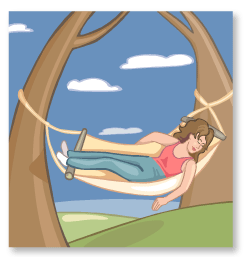
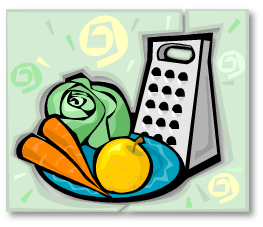
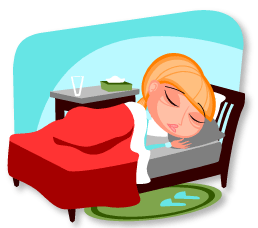

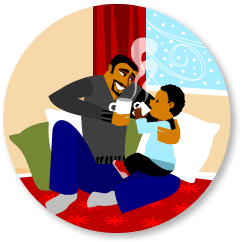
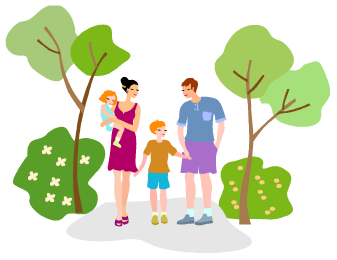
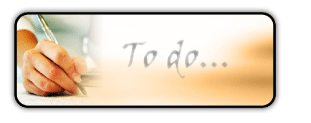

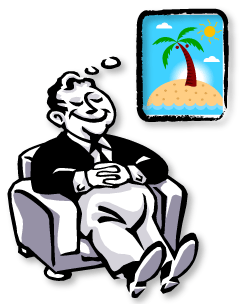

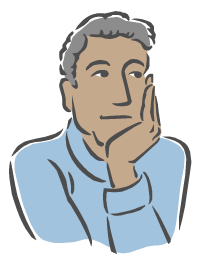
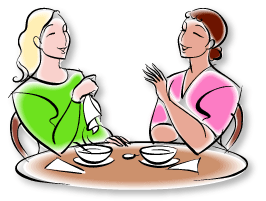
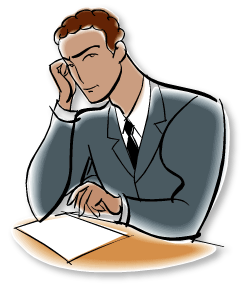
-
Symptoms of anxiety
-
Example

Mike takes action
After reading the Acing upon the problem section of the Coping with Stress
and Anxiety chapter, I’ve learned various ways of coping with the stressors
in my life.Right now I’m working on trying to get more control over my emotions.
I plan on checking and assessing my thoughts to see if I am over thinking things, which usually leads to a feeling of stress and anxiety. I noticed that I tend to over think things especially when it has something to do with my chronic condition. Now, when I am in pain and start feeling some stress, I take action. I take in deep breaths, go for a walk or just take a hot bath to take some of the stress and anxiety away. Once calm, I then think about the issue that gave me some grief and then try think of ways to solve it. The problem seems so much more manageable when I am in a relaxed state.

-
Worksheets
PACE - Challenges You May Face
-
I have tired everything and I am still stressed and anxious
It’s important to keep trying different ways of coping with stress and anxiety. What may not have worked the first time may work the second, third or fourth time.
Stick with your plan and do not give up. The more you practice coping styles, the more it will become a reflex when faced with a stressful situation.
Remember that you can always get more support if you feel that
nothing works, even after trying everything and persisting with your planTry discussing the situation with a trusted friend or a family member
and getting their point of view regarding your stressful situation.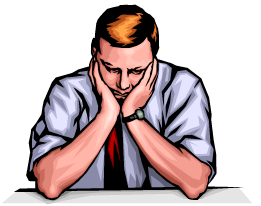
-
Example
Challenges Mike faces with her plan
My plan works well when my pain is moderate, but I find it next to
impossible to stay calm when I’m in pain. I just can’t help but think that my
pain will never go away.Mike gets more help
First, I talked to some family members about this and they didn’t really
know what to tell me. Because they don’t have chronic pain, they weren’t
sure how it created stress and anxiety in my life.I then decided to talk to my coach about this and was advised that when
I am in pain, to try to focus on anything but my pain. Using distracting
measures can help reduce stress, anxiety and pain levels. This is not easy
at first, but it does get easier with practice.



-
Worksheet
PACE - Evaluating Your Plan
-
How did your plan work?
This is the final step in PACE – Evaluating your plan. Just like using a scale, weigh out how successful your plan was in dealing with the problem you chose to work on.
Look at the concern you identified
• Did your plan work?
• Do you see some improvement?
• Look at the things that did work
Try not to fix everything all at once. Some things may take longer to
work on than others.Click on the video to learn more about evaluating your plan.



-
How will you know if you need to modify your plan?
Try of a week or two and track how well your plan is working. At the end of every day write down what is working and what isn’t.
Reward yourself for progress as often as you can. Remember that changing behaviours, especially when you are in pain and feeling tired and stressed can be hard. If you persist, you will see rewards!
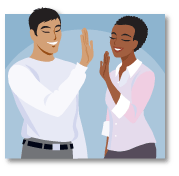
-
Different ways of keeping up with your plan in your everyday life
Asking your support network, like your friends and family, to help motivate
you with your plan is also a great idea.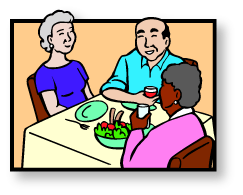
-
Example

Mike evaluates her plan
I think that at the beginning, I was a little impatient with my plan. I felt like I
didn’t really work. I notice now that with practice, the techniques do get
easier.I find that it’s much harder to control my stress level if I wait too longer
before doing something about it. I notice that it works best when I try to
cope with my stress and anxiety as soon as I feel it, rather than waiting
until it escalates.
-
Worksheet
-
Example 2

How Mike will stay on track
The best way for me to stay on track with my plan is to keep detecting my
stress and anxiety when I feel the first signs of it and then do something
about it. I also try to incorporate some activities in my everyday life to help
reduce the stress level. Sometimes, I can release quite a bit of stress and
emotions just by renting a funny movie and having a good laugh. Other
times, I find that taking a long walk in the park helps me calm down. A
great way to stay motivated with these stress relieving activities is by surrounding myself with friends and family. I do much better at keeping up with these activities when I have someone to do them with. I often take walks with my neighbor, watch a movie with my wife, and go bowling with my friends. On days when I don’t feel like doing anything, they encourage me to join them because they know that it is good for me.
-
Worksheet
Checklist
Click on the icon to the right which will link you to a checklist of situations you may be going through. It also allows you to express some of your difficulties or concerns.
The checklists are for your use only; however, should you feel the need to discuss any of your responses, please bring a copy to your next Pain Clinic appointment.
If you are experiencing a high amount of distress, please click on the help phone icon on the bottom left of the website.
Click on the icon to access the checklist

Resources
If you are interested in learning more about the subjects discussed in this chapter, please click on the icon to the right to access some references.
If you need help finding any of these resources you can ask any member of your psychosocial team.
Anxiety
• www.cfpc.ca/English/CFPC/Programs/Patient%20Education/Anxiety/Default.APS?S=1
Stress
• www.HS-SC.GC.ca/HL-VS/Tobac-Tabac/Quit-cesser/now-maintenant/tips-conseils/stress_e.html
Stress Statistics
• www.statcan.ca/Daily/English/040121/d040121b.htm
• www.cbc.ca/health/story/2006/02/09/stress-death060209.html
Conclusion
You are done this chapter. By finishing this chapter and completing all the worksheets you have learned many skills. We hope that you have solved your problem using CHANGES and learned many new ways to tackle problems that you may have in the future. You have put in a lot of work in this chapter so give yourself a pat on the back.
In this chapter you have learned:
• How to relieve stress
• Various examples of activities to help cope with stress and anxiety
• How to recognize signs of stress and anxiety
• The physical and emotional symptoms of stress and anxiety
• Facts about stress and anxiety
• Interesting statistic findings about stress and anxiety
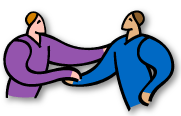
Introduction
Goals
P - Picking a Problem
A - Acting Upon the Problem
C - Challenges You May Face
E - Evaluating Your Plan
Checklist
Resources
Conclusion
Glossary






